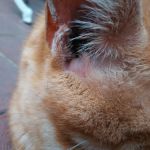
- 1. Introduction: Understanding Fleas and Ticks
- 2. Natural Ways to Prevent Fleas and Ticks on Your Pet
- 3. Effective Natural Treatments for Fleas and Ticks
- 4. Creating a Flea and Tick-Free Environment at Home
- 5. When to Seek Professional Veterinary Help
- 6. Conclusion: Keeping Your Pet Safe and Healthy
1. Introduction: Understanding Fleas and Ticks
Fleas and ticks are not just a nuisance to pets, they can also pose serious health risks. Fleas can cause itching, allergic reactions, and transmit diseases, while ticks can spread Lyme disease, ehrlichiosis, and other infections. Preventing and treating these parasites naturally is crucial for keeping your pet healthy. In this article, we will explore natural methods for preventing and treating fleas and ticks on your pet, along with tips on how to maintain a safe, pest-free environment at home.
2. Natural Ways to Prevent Fleas and Ticks on Your Pet
Prevention is always the best approach when it comes to fleas and ticks. There are several natural ways to protect your pet from these parasites, reducing the need for harsh chemicals.
1. Regular Grooming: Brushing your pet’s coat regularly helps to remove any fleas, ticks, or eggs that may be hiding. Use a flea comb to catch tiny fleas and their larvae, especially around areas where ticks like to attach, such as the ears and neck.
2. Herbal Flea and Tick Sprays: Herbal sprays made from essential oils like lavender, eucalyptus, or cedarwood can be an effective natural deterrent for fleas and ticks. You can create a DIY spray by diluting essential oils in water and applying it to your pet’s coat. Always ensure the oils used are safe for pets, as some can be toxic.
3. Apple Cider Vinegar: Apple cider vinegar is a natural remedy that can help repel fleas and ticks. Diluting apple cider vinegar with water and spraying it on your pet’s coat can keep pests away. You can also add a small amount to your pet’s drinking water (consult with your vet for the correct dosage).
4. Diatomaceous Earth: Food-grade diatomaceous earth is a non-toxic powder that can be sprinkled on your pet’s fur, as well as in areas where they frequent. It works by dehydrating and killing fleas and ticks without the use of chemicals. Be sure to use food-grade diatomaceous earth to ensure safety for your pet.

Hodes Veterinary Group
Mine Hill TownshipMorris CountyNew Jersey
265 US-46, Mine Hill Township, NJ 07803, USA
3. Effective Natural Treatments for Fleas and Ticks
Even with preventive measures in place, your pet may still end up with fleas or ticks. Here are some natural treatments to address the problem without resorting to harsh chemicals.
1. Bathing Your Pet: Give your pet a bath using natural ingredients like castile soap, which is gentle on their skin and can help to remove fleas and ticks. You can also add a few drops of essential oils like tea tree or neem oil to the bath water to further combat pests.
2. Flea and Tick Collars with Natural Ingredients: If you prefer a collar, look for those made with natural ingredients such as citronella, lemongrass, or neem oil. These collars can help repel fleas and ticks without the use of toxic chemicals.
3. Natural Flea and Tick Powders: Flea and tick powders made from natural ingredients like neem powder, cedarwood, and diatomaceous earth can be used as a topical treatment. These powders kill fleas and ticks on contact and can help prevent future infestations.
4. Aloe Vera for Itchy Skin: If your pet develops itching or irritation from flea bites, aloe vera gel can help soothe their skin. Apply the gel directly to the affected area to relieve discomfort.
4. Creating a Flea and Tick-Free Environment at Home
To further protect your pet from fleas and ticks, it’s important to maintain a flea-free environment in your home and yard. Here are a few strategies to consider:
1. Regularly Vacuuming Your Home: Fleas can hide in carpets, bedding, and upholstery. Vacuuming regularly, especially in areas where your pet sleeps or plays, helps to remove fleas, eggs, and larvae. Make sure to dispose of the vacuum bag immediately to prevent re-infestation.
2. Wash Bedding and Toys: Wash your pet’s bedding, toys, and any other fabric items in hot water to kill any fleas or ticks. This should be done regularly, especially after outdoor activities.
3. Treat the Yard: Fleas and ticks can also thrive in your yard. Keep the grass trimmed and use natural insect repellents like cedar chips or neem oil to keep pests at bay. Ensure that your pet is not spending too much time in areas where fleas and ticks are more prevalent.
5. When to Seek Professional Veterinary Help
While natural treatments can be effective, there may be times when professional veterinary care is needed. If your pet has a severe flea or tick infestation, or if they are showing signs of illness such as lethargy, fever, or loss of appetite, it’s essential to consult your veterinarian. Your vet can provide additional treatment options and help to ensure your pet’s well-being.
6. Conclusion: Keeping Your Pet Safe and Healthy
Preventing and treating fleas and ticks naturally can be a safe and effective way to protect your pet from these common pests. By using a combination of regular grooming, natural sprays, and maintaining a clean environment, you can significantly reduce the risk of flea and tick infestations. However, always consult your veterinarian before trying new treatments to ensure the safety and health of your pet.
For more pet care tips and products, visit Omnia Pet for a wide range of natural flea and tick solutions.








 Californiacanaries.com5.0 (7 reviews)
Californiacanaries.com5.0 (7 reviews) Fish Works4.0 (46 reviews)
Fish Works4.0 (46 reviews) Merch For Dog Lovers5.0 (4 reviews)
Merch For Dog Lovers5.0 (4 reviews) Wet Pets4.0 (7 reviews)
Wet Pets4.0 (7 reviews) Artesia Animal Hospital4.0 (34 reviews)
Artesia Animal Hospital4.0 (34 reviews) Banfield Pet Hospital4.0 (241 reviews)
Banfield Pet Hospital4.0 (241 reviews) How to Handle an Aggressive Dog on the Leash | Leash Training Tips
How to Handle an Aggressive Dog on the Leash | Leash Training Tips The Best Diet for a Scottish Fold Kitten's Joint Health
The Best Diet for a Scottish Fold Kitten's Joint Health Why Is My Dog's Stomach Making Noises? Borborygmi Explained
Why Is My Dog's Stomach Making Noises? Borborygmi Explained How to Recognize Normal vs Aggressive Kitten Play Fighting
How to Recognize Normal vs Aggressive Kitten Play Fighting Top 10 Most Common Health Issues in Cats and How to Prevent Them
Top 10 Most Common Health Issues in Cats and How to Prevent Them Why Does My Cat Have Black Stuff in Their Ears? Causes and Solutions
Why Does My Cat Have Black Stuff in Their Ears? Causes and Solutions